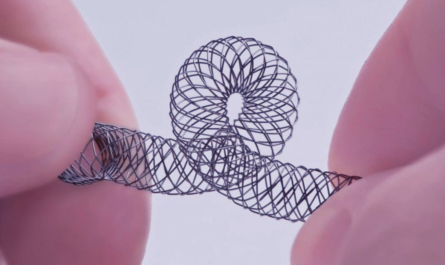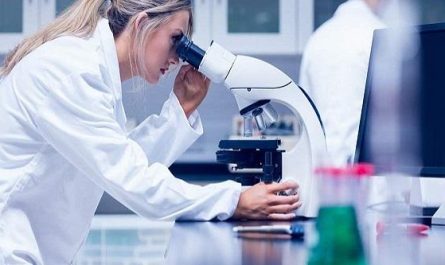
Cardiac rhythm management devices play a crucial role in treating various cardiac arrhythmias and heart conditions. These devices monitor the heart’s rhythm for any abnormalities and provide electrical stimulation when required to regulate abnormal rhythms. In this article, we will discuss the various types of cardiac rhythm management devices available along with their functions and applications.
Pacemakers
One of the most common cardiac rhythm management devices used is the pacemaker. A pacemaker is a small battery-powered device placed under the skin of the chest to help regulate abnormal heart rhythms. Pacemakers sense if the heart is beating too slow and deliver low-voltage electrical pulses to prompt the heart to beat at a normal rate. They are used to treat bradycardia, which is an abnormally slow heart rate. Pacemakers come in different designs including single-chamber pacemakers that stimulate either the atrium or the ventricle, and dual-chamber pacemakers that stimulate both the upper and lower chambers. Some advanced pacemakers can even adapt the pacing rate depending on the patient’s activity levels.
Implantable Cardioverter Defibrillators
Implantable cardioverter defibrillators (ICDs) are used to treat life-threatening cardiac arrhythmias like ventricular fibrillation and ventricular tachycardia. These devices continuously monitor the heart rhythm and deliver electrical shocks to terminate any abnormal fast heart rhythms detected. ICDs differ from pacemakers in the sense that they not only pace the heart but can also deliver shocks of higher energy levels. The stored electrical energy in ICDs is delivered through wires called leads placed in the chambers of the heart. Modern ICDs have sophisticated programmable functions to detect arrhythmias accurately and can provide both anti-tachycardia pacing or shocks as required.
Cardiac Resynchronization Therapy Devices
In conditions like congestive heart failure, the lower chambers of the heart do not contract in a synchronized manner. Cardiac resynchronization therapy (CRT) aims to coordinate the beating of the heart chambers by using biventricular pacemakers called CRT devices. They contain three leads placed in the right atrium, right ventricle, and left ventricle. CRT devices deliver pacing stimulation to both ventricles to restore the synchronicity of contraction. This improves the heart’s pumping ability and reduces symptoms in patients with heart failure. Studies have found CRT to significantly reduce mortality and hospitalization rate in such patients.
Subcutaneous Implantable Cardioverter Defibrillators
Subcutaneous implantable cardioverter defibrillators (S-ICDs) are the latest generation of defibrillators that do not require any leads to be placed inside the heart chambers. The entire device including the battery and pulse generator is placed just under the skin in the left chest region. Only a single lead is implanted just under the skin to detect cardiac rhythm and deliver shocks if needed. S-ICDs have emerged as an alternative to transvenous ICD systems in certain patients. They avoid the need for leads to be placed inside the heart and the risks associated with transvenous lead extraction or failure. However, S-ICDs have few limitations like inability to deliver anti-tachycardia pacing.
Mobile Cardiac Telemetry Systems
Mobile cardiac telemetry (MCT) systems are the latest technological advance used for continuous cardiac monitoring outside the hospital setting. An MCT patch containing ECG sensors is connected to a small portable recorder device worn by the patient. This transmits the real-time ECG data wirelessly for remote monitoring by physicians. MCT provides extended cardiac monitoring ability for up to 30 days compared to traditional Holter monitors. They have become useful for diagnosing rhythm abnormalities in conditions like unexplained syncope and dizziness. By providing long-term continuous monitoring, MCT plays an important role in detecting transient arrhythmias that cannot be identified through occasional office visits or short Holter monitoring periods.
Role in Arrhythmia Management
Cardiac rhythm management devices have revolutionized the management of arrhythmias over the past decades. Pacemakers and ICDs help deliver life-saving therapies for bradyarrhythmias and tachyarrhythmias respectively. These devices do not cure arrhythmias but prevent their life-threatening consequences through electrical stimulation. For conditions like congestive heart failure, CRT devices play a vital role in improving cardiac functioning and reducing mortality risks. Novel technologies like S-ICDs and MCT provide additional options for arrhythmia monitoring and management. Regular device follow-ups help optimize programming to maximally benefit patients. Overall, cardiac rhythm management devices have enabled improved quality of life and longer survival in millions of patients worldwide suffering from cardiac arrhythmias.
Conclusion
In summary, cardiac rhythm management devices include pacemakers, implantable defibrillators, CRT devices, S-ICDs and mobile cardiac telemetry systems. Each type plays a unique role in monitoring and treating specific cardiac arrhythmias or heart conditions. Ongoing research is further developing these devices with innovative technologies and features. Novel leadless pacemakers and subcutaneous defibrillators represent exciting avenues to expand arrhythmia treatment options. The future promises advanced algorithms for detecting arrhythmias early and targeted therapies for regulating abnormal rhythms efficiently. Cardiac rhythm management devices will certainly continue their important role in improving cardiovascular healthcare worldwide.
*Note:
- Source: Coherent Market Insights, Public sources, Desk research
2. We have leveraged AI tools to mine information and compile it


